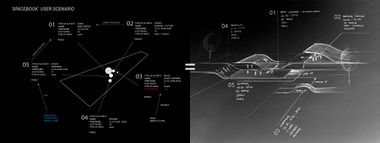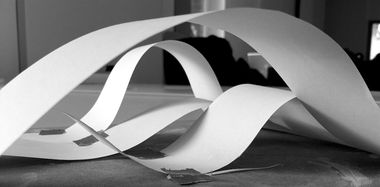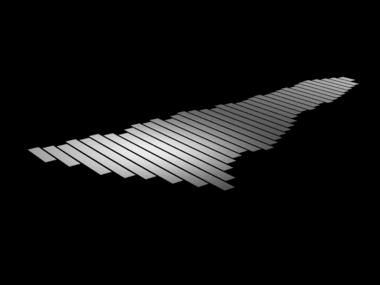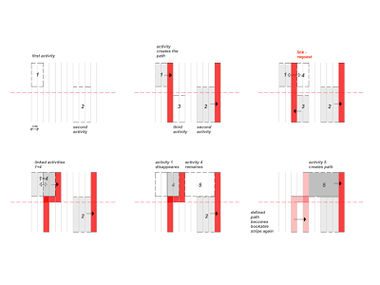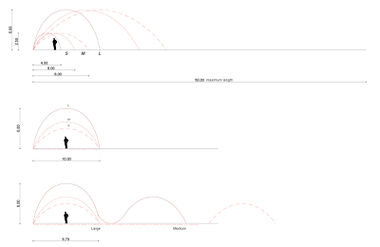project C:ARCHITECTURE
Contents |
LINK
Concept
The system connecting the Spacebook interface and the structure at the site should be easy to understand but with tremendous result and inspiring outcomes. Just like Spacebook itself.
Research
After extensive in the architectural composition of the site it was concluded that the structure would curve in only one direction (instead of two) and that the floor would stay static (instead of adaptable as well). It turned out that a double curved structure ánd/ór moving floors are not understandable for the future users. Furthermore a single curved structure and a static floor has a very rich architectural output, while easy to understand
Validators
References
park
Atom XX / Project XX
Design Proposal
Architectural proposal
The architectural implementation of the structure follows a set of rules, they can be found in the pictures below.
Part of the original vegetation of the site is maintained. Not only to create a border between the heavy traffic surrounding the site, but also to create a transition zone between the activities and structure and the direct environment. The lower bushes and the high trees are kept to create this transition border. The lower bushes make sure the structure is visible from the outside and the site looks accessible. The high trees give the the border more body and ultimately define the shape of the plan of the structure.
The structure system itself creates pathways next to spaces, see technical implementation. Even without these automatically created pathways the site is still accessible. Four entrances/exits are created in the border: two leading to the faculty of architecture, one leading to the Science Centre and one leading to the Botanical Gardens of TU Delft. Situated between the green border and the structure is a small pathway that can be followed all around the site. This ensures the site is always accessible in the best way possible.
The strips of the construction are continued in the green border. This creates an interesting transition zone and the entire site (structure, vegetation and pathways) work as one organism. To strengthen the idea of one organism the architectonic detailing of the strips (the structural strips, the footpath and the vegetation) is crucial. This architectonic detailing is for example LED lighting in the upper and under surface of the construction, to give the structure its linear shape, also when it's dark. The used materials in the vegetation, pathways and construction surface are chosen to enlarge the feeling of linearity, continuity and one organism.
Technical implementation
The path system is based on an algorithmic system connecting the user output to the structure input. When a user adds a new space the algorithm will check if the space is connected to a pathway. When this is not the case the algorithm will then create a new path directly on the right side of the space. Other users can then add their own spaces to this created path.
In the case when two activities/spaces would like to link, but there is a pathway in between the two, the following will happen: the two spaces will merge together and become one space. The pathway then moves his way around the newly formed space. This is also demonstrated in the drawing on the left.
When there are no more activities linked to a pathway, the path will disappear and make place for new spaces.
